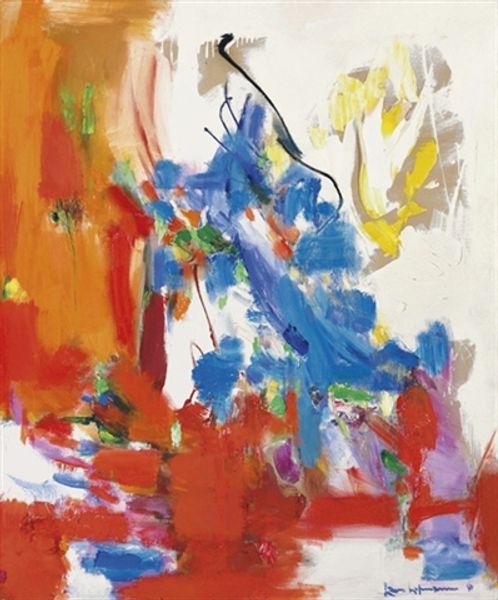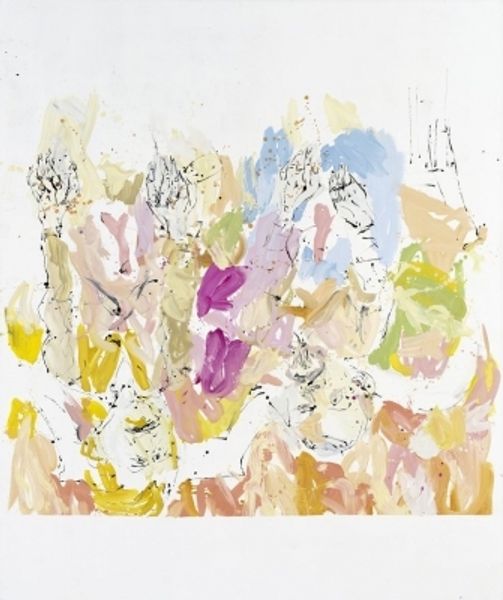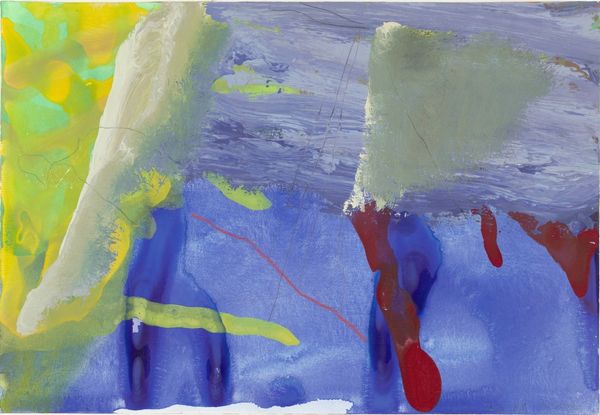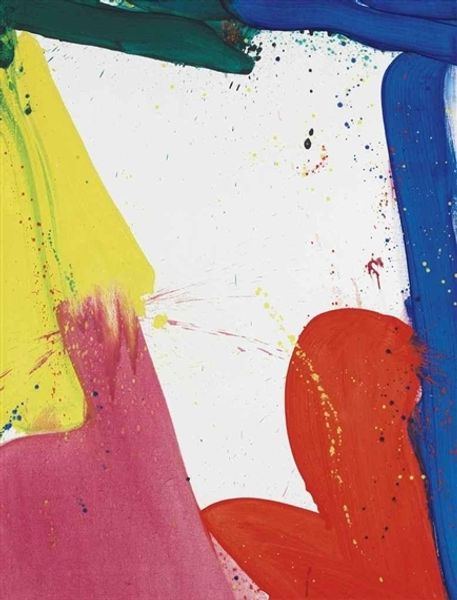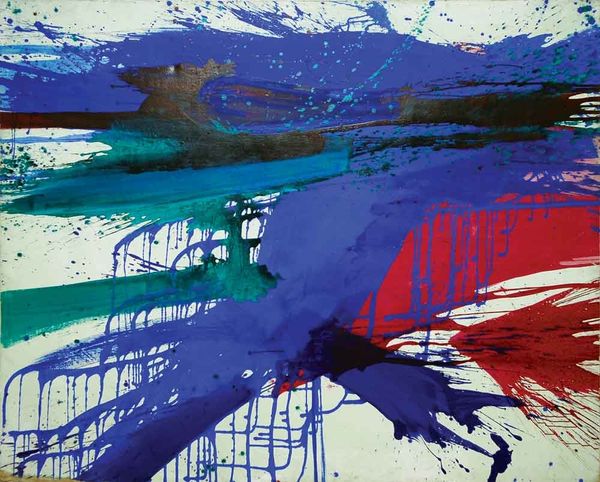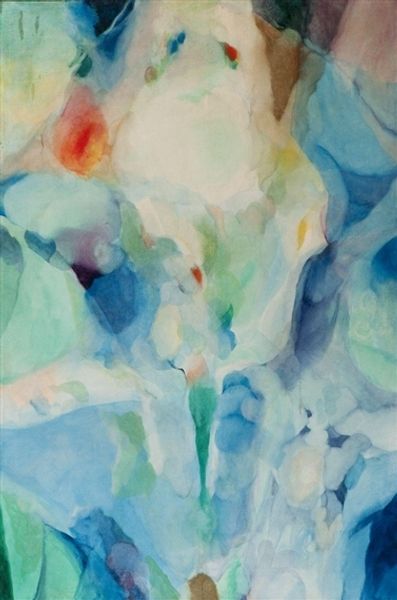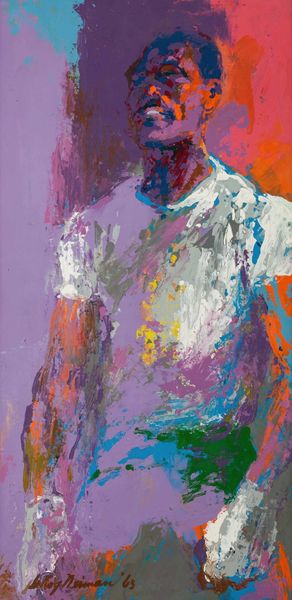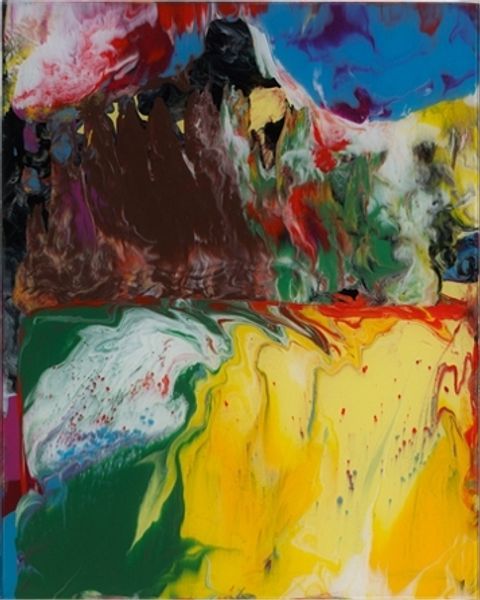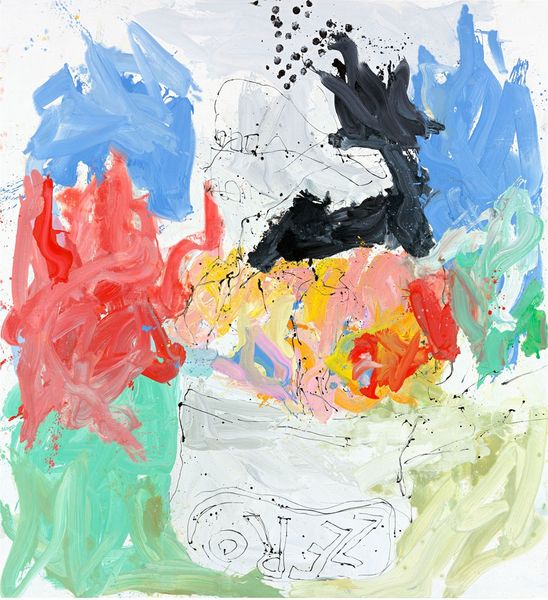
watercolor
#
gouache
#
water colours
#
watercolor
#
abstraction
#
modernism
#
watercolor
Copyright: Olivier Debre,Fair Use
Curator: We’re looking at Olivier Debré’s "Blanche variante taches rouges de Royan," a watercolor from 1981. The canvas is dominated by white, with seemingly random splashes of color. Editor: My first impression is airy, almost weightless. The translucent quality of the watercolors creates a sense of openness, like a fleeting moment captured in the fluidity of the paint. Curator: Considering Debré's process is key. His experimentation with diluted watercolors and varied application techniques results in the unpredictable textures we see. There is also a dance between control and accident in how these watercolor materials behaved on the surface. Editor: True, the material behavior is fascinating. Note the drips and bleeds, and the contrast between concentrated pigments and washes. These offer structural elements: an interplay of solid form against soft ground. Curator: Debré's abstraction doesn’t exist in a vacuum; his use of watercolors in the late 20th century must also acknowledge their availability and usage in society. It pushes against traditional academic painting to democratize artmaking. Editor: But doesn't that also obscure Debré's distinctive vision? Regardless of its availability, the restrained color palette and spatial arrangements, a near void punctuated by those stark chromatic accents, speak to a very specific visual intention. A modernist aesthetic of simplicity is highlighted here. Curator: That intent also extends to labor. It’s a rebellion against elaborate production and instead focuses on gesture—evident in his spontaneous mark-making, reflecting art's evolving role within consumer culture. The “red spots of Royan,” in the title, reference locality and experience with a focus on their application on this surface. Editor: Yes, and consider how those specific placements impact the piece. They serve almost as focal points. The strategically placed "taches rouges" guide the eye across the expansive white, creating a visual rhythm that feels both deliberate and effortless. They highlight the white as part of the material conversation rather than as default canvas color. Curator: A very insightful comment on how his choices, not just accidents of medium or intent, guide interpretation. Editor: Indeed, this is how these forms can shape perception in such unique artwork!
Comments
No comments
Be the first to comment and join the conversation on the ultimate creative platform.
